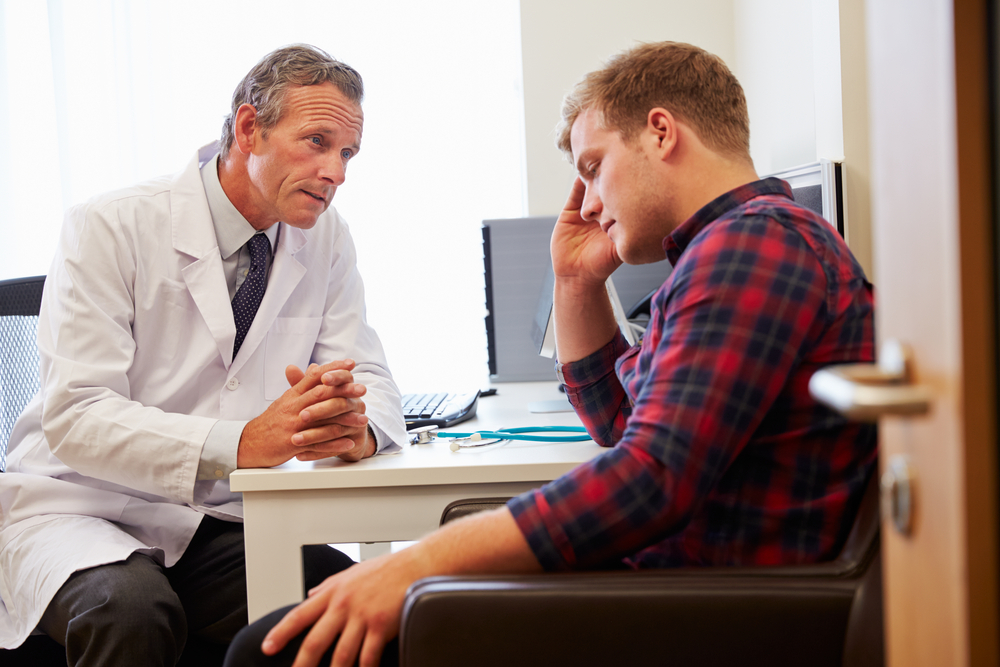
Depression has become an integral term used in American society to describe sadness. However, depression, also known as major depressive disorder (MDD) or clinical depression, is listed as a medical illness in the Diagnostic and Statistical Manual of Mental Disorders, Fifth Edition (DSM-5) and is recognized as a serious mood disorder. The World Health Organization (WHO) explains that depression is “characterized by persistent sadness and a lack of interest or pleasure in previously rewarding or enjoyable activities,” resulting in significant impairment in one’s daily life. An individual who suffers from clinical depression has a chemical imbalance in his or her brain, resulting in an inability to return to an emotional equilibrium as quickly as others when experiencing an emotional low. According to the Centers for Disease Control and Prevention (CDC) depression affects nearly 10% of the general population in America.
DSM-5 Diagnostic Criteria
To be diagnosed with major depression, a person’s symptoms must fit the criteria outlined in the DSM-5. An individual must be experiencing five or more of the following symptoms during the same 2-week period and at least one of the symptoms should be either (1) depressed mood or (2) loss of interest or pleasure:
- Depressed mood most of the day, nearly every day.
- Markedly diminished interest or pleasure in all, or almost all, activities most of the day, nearly every day.
- Significant weight loss when not dieting or weight gain or decrease or increase in appetite nearly every day.
- A slowing down of thought and a reduction of physical movement (observable by others, not merely subjective feelings of restlessness or being slowed down).
- Fatigue or loss of energy nearly every day.
- Feelings of worthlessness or excessive or inappropriate guilt nearly every day.
- Diminished ability to think or concentrate, or indecisiveness, nearly every day.
- Recurrent thoughts of death, recurrent suicidal ideation without a specific plan, or a suicide attempt or a specific plan for committing suicide.
These symptoms must cause the individual clinically significant distress or impairment in social, occupational, or other important areas of functioning. The symptoms must also not be a result of substance abuse or another medical condition.
The Treatment Process
There are many approaches to treating depression. For those who have a mild case of major depressive disorder the treatment could comprise primarily of psychotherapy. There are many different types of therapeutic modalities that could be incorporated into one’s treatment plan, such as cognitive behavioral therapy (CBT), dialectical behavior therapy (DBT), expressive arts therapy, and interpersonal psychotherapy (IPT). CBT is a type of therapy that combines behavioral therapy with talk therapy. DBT primarily uses mindfulness-based principles to help an individual learn tools and techniques to work towards achieving one’s therapeutic goals through understanding one’s emotions and subsequent behaviors related to one’s emotions. IPT uses an interpersonal filter to explore and examine the relationships and their effects on one’s life.
Some people diagnosed with severe major depressive disorder may benefit from including medication into the treatment plan, in conjunction with various therapeutic methods. The different types of medications prescribed for MDD include selective serotonin reuptake inhibitors (SSRIs), serotonin and norepinephrine reuptake inhibitors (SNRIs) and norepinephrine and dopamine reuptake inhibitors (NDRIs). A quality treatment program will consider all treatment options and create a nuanced treatment plan, incorporating medication when needed as well as the best possible therapeutic modalities that are expressly geared to one’s personal needs.
Disclaimer:
The information above is provided for the use of informational purposes only. The above content is not to be substituted for professional advice, diagnosis, or treatment, as in no way is it intended as an attempt to practice medicine, give specific medical advice, including, without limitation, advice concerning the topic of mental health. As such, please do not use any material provided above to disregard professional advice or delay seeking treatment.
